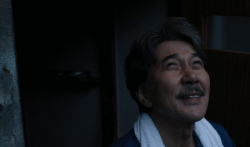What is it about nostalgia that attracts audiences? The afternoon showing of Toy Story & Toy Story 2 in 3D I attended last weekend was filled with teenagers and young adults, all of whom were chattering about Woody and Buzz Lightyear. Some were wearing goofy grins on their faces. One teenage girl was wearing a Mr. Potato Head t-shirt. Most were wearing 3-D glasses.
After the final credits rolled on Toy Story 2 and I stretched my woefully sore body, having been stuck in a prone position for hours, I started listening to the conversations around me. A man was telling his young daughter about his childhood—you know, back when children’s movies were seen in two dimensions. He told her that Toy Story reminded him of the films he watched when he was little. I doubt he was in diapers when Toy Story was originally released in 1995—or at least I hope he wasn’t since he looked to be in his mid thirties—but his admission reveals the key to Pixar’s success: Pixar movies inspire immediate nostalgia because they feel old and new simultaneously.
As of October 7, Toy Story & Toy Story 2 in 3D has grossed over thirteen million dollars. I doubt that audiences were showing up to see the Pizza Planet van in 3-D, despite the fact that the RealD 3-D technology the film used exceeded expectations. I guarantee that nobody paid fifteen dollars because they wanted to listen to original music by Randy Newman. People paid to see the double feature because it reminds them of simpler times in their lives. That, or lots of parents in America are looking for any way to kill three-plus hours with their kids.
When I was six years old—when Toy Story came out—life was easy. My world revolved around peanut butter and jelly sandwiches, recess at lunch, grape Jolly Ranchers, and Scooby-Doo reruns. Watching Toy Story & Toy Story 2 in 3D reminded me about life as a toddler, but it also made me recognize how differently I perceive things today.
I wondered where Andy’s father was throughout the films—are his parents divorced? Is there a deleted scene where Andy gets a call from his deadbeat dad telling him that he can’t bring him to Disneyworld because he has to “lay low” for a while?
I noticed that Woody makes reference to “the rules,” a set of laws that explain why every toy has to play dead when a human comes into the room. Is there a Toy God that demands compliance to these rules? If He exists, does the Toy God look like G.I. Joe? If so, does he have a kung-fu grip?
Toy Story and Toy Story 2 are universally enjoyed because they rely on conventional themes in creative ways. Walking, talking toys confront heavy issues like jealousy and abandonment, but only to teach us lessons about friendship and teamwork. Pixar continually toes the line between technical superiority and classical storytelling techniques. Films like Toy Story, Finding Nemo, and more recently, Up, amaze us with realistic computer-generated graphics, but they draw us in because they tug on the remnants of innocence that we hold onto as we mature. They tell us houses can fly. They tell us robots can love. And they promise us walking, talking toys do exist—they just can’t let us know.
If you’ll excuse me, I’m going to go dig through storage boxes to find my old teddy bear.




